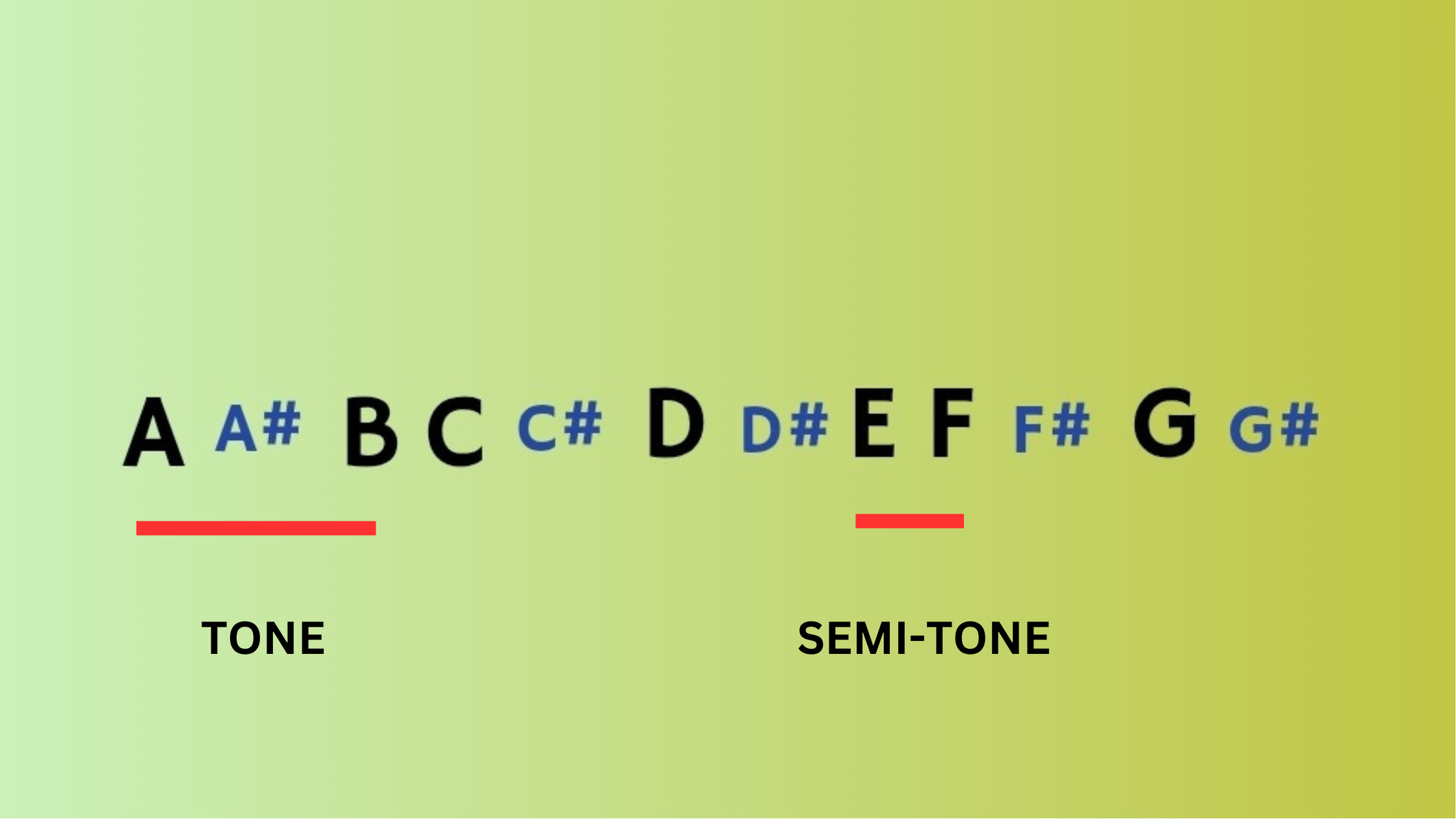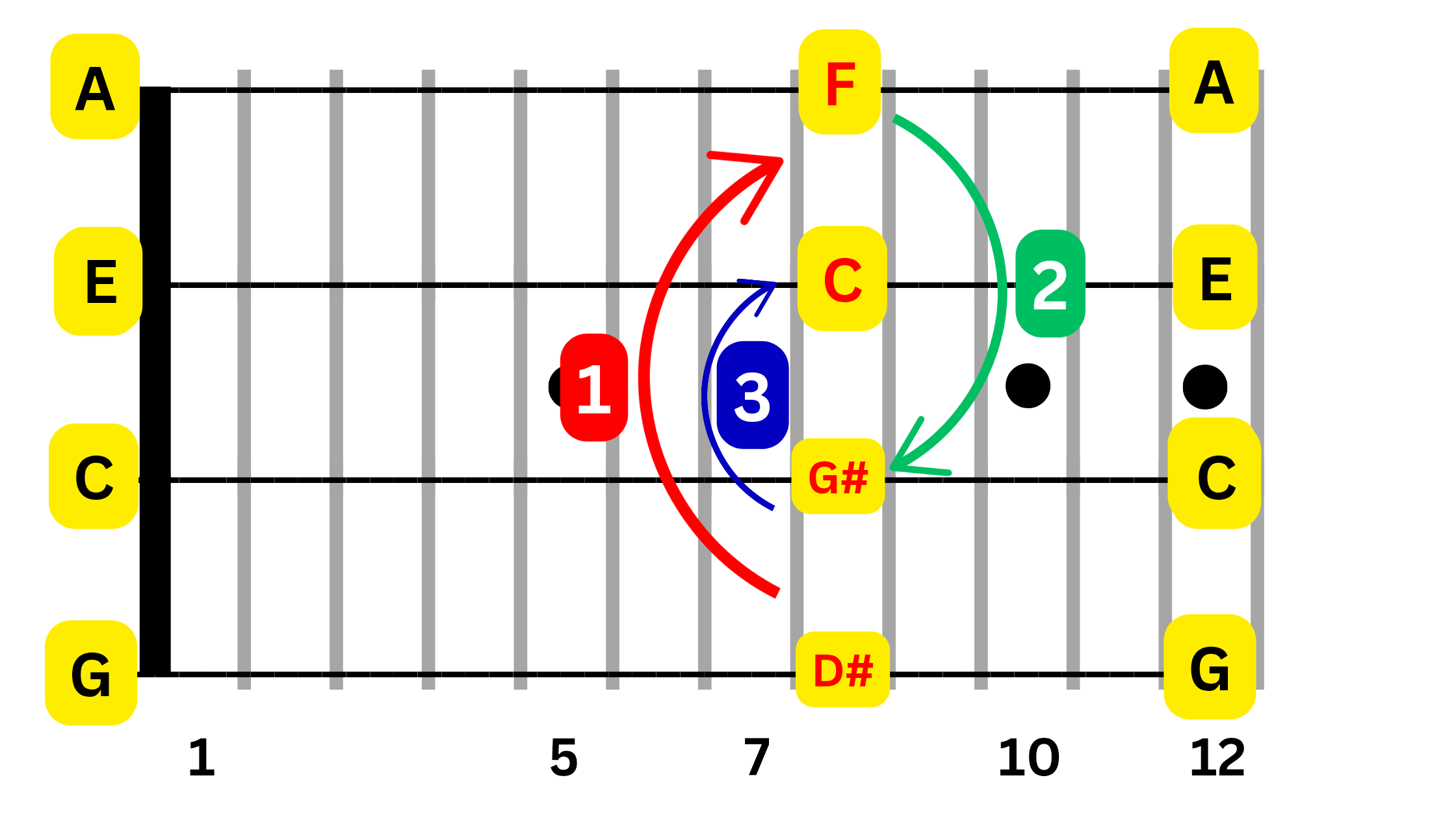-
Conquer the Fretboard 1
-
Have you ever completed a jigsaw puzzle? I did a few of those WASGIJ puzzles ages ago. The first was a small, but diabolical one. The last was a huge one. A huge and easier one. Practise is not overated 😅
At first the fretboard with all the repeated notes can resemble a pile of jigsaw pieces. But, just like a jigsaw, once you look carefully you can begin to see patterns emerge.
In order to make it less overwhelming, we're going to learn how to assemble our fretboard notes puzzle with just the first four strings. As an aside, once you've mastered the first four strings you've also learned the ukulele fretboard!
-
Pattern 1: Landmark Notes 1
First off, to help us get started, the guitalele fretboard usually (but not always) has markings on the fretboard as well as sometimes on the side of the neck facing you. These help you to quickly find your place.
Next, you need to place down your landmark note pattern jigsaw pieces. You will have noticed that the music alphabet had no notes between the letters B and C, and E and F. These letters (notes) are a semi-tone, or half-step apart. That is, they are on adjacent frets on a string. Simply put, the frets are next to each other 😊.
These landmark notes are also easy to locate, given that two of them, C and A, are two of the strings. If you bookcase the fretboard between the first four open strings and the 12th fret (where the open string notes repeat an octave higher) then you can begin the puzzle. The 12th fret often has two marker dots on it. Unfortunately, my guitalele only has one dot. But, the single dot at the 12th fret is the last dot, and so that also helps me to locate this fret.
Enjoy 🍿🥤❣️
-
Pattern 2: Diagonals
In the Landmark Notes video I actually used this pattern to locate more of the BC EF patterns. This diagonal pattern operates between the 1st and 4th strings.
On the 1st string you go forwards (towards the soundhole) two frets (a tone or whole-step) and up to the 4th string to get the same note. If you're on the 4th string you do the reverse. Go back (towards the nut) two frets and down to the 1st string to get the same note.
The following video is an extract from the previous video.
-
Pattern 3: Within a Fret, Strings 1 & 4
Strings 1 and 4 continue their relationship with this next pattern. The note on the 1st string is a tone (or whole step) above the 4th string note in the same fret. And the reverse is true.

It's easy to work out the note name as it's usually the next or previous note letter. The letter/note C on the 5th fret becomes D by going down from the 4th to the 1st string.

Just don't forget the exceptions: B to C and E to F (and the reverse) need a sharp/flat added to the next letter, otherwise they will only be a semi-tone or half-step apart. Thus, B on the 4th fret becomes C# when going down from the 4th string to the 1st string.

But what about the sharps and flats? Do you remember the term 'enharmonics' from the video in the Notes topic?

For now, we'll just use sharps and not the equivalent enharmonic flats name to demonstrate.
G# -> A#
A# -> B# (the enharmonic equivalent is C)
C# -> D#
D# -> E# (the enharmonic equivalent is F)
F# -> G#
The reason for the use of enharmonics will be covered in the upcoming course on Music Knowledge.
-
Pattern 4: Within Fret, Strings 2 & 3
This pattern works if you're able to do mental arithmetic 😂. It's easier to look for the nearest Landmark Notes. That said, I used this pattern before I knew where all the notes were on the fretboard.
I learned the 4th string notes early on for some reason 🤷 So, then I'd firstly apply Pattern 2, and then use this pattern.
If you've ever played a game of hopscotch, then this pattern will also work for you 😅.
Demonstration
- C -> D [Pattern 2: Two semi-tones or a tone]
- D skip E to F -> 3 semi-tones
- F skip G to A -> 4 semi-tones
Next, I'd recheck the number of semi-tones, especially if I had started on B or E.
Example 1
Fret 4
- B to C# [Pattern 2]
- C# skip D to E (3 semi-tones)
- E skip F to G# (4 semi-tones)

Example 2
Fret 9
- E to F# [Pattern 2]
- F# skip G to A (3 semi-tones)
- A skip B to C# (4 semi-tones)

Example 3
6th Fret
- C# to D# [Pattern 2]
- D# skip E to F# (3 semi-tones)
- F# skip G to A# (4 semi-tones)

This last example was a cheat, as I knew the notes would all be sharps as it was the 6th Fret 😈
Example 4
8th Fret
- D# to E# (aka F) [Pattern 2]
- E# skip F to G# (3 semi-tones)
- G# skip A to B# (aka C) (4 semi-tones)

Summary
As you've (hopefully) just seen, it's SO much easier to learn the Landmark Note patterns, as there are some Landmark Notes in EVERY fret, apart from Fret 6 😈.
-
Pattern 5: Frets 5 and 7
Frets 5 and 7 are special.

- They only contain natural notes.
- They contain four Landmark Notes between them: C and F for Fret 5, strings 4 and 3; and B and E for Fret 7, strings 2 and 1.
- Fret 5 - apart from fretting the 3rd string - is used to tune the ukulele relative to the 4th string.
- The 7th fret's notes are the same as the baritone ukulele strings and the first four strings of the guitar - DGBE.
- They both usually have a fretboard marker dot.
- They flank Fret 6, which is the only fret with all sharps (or flats). It's the Dark Lord Fret 😈

-
Guitalele Music Alphabet
Top Block Position
Bottom Block Position
